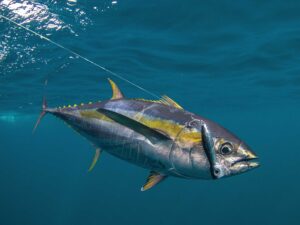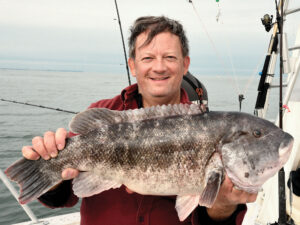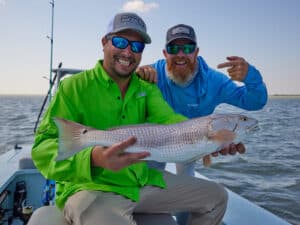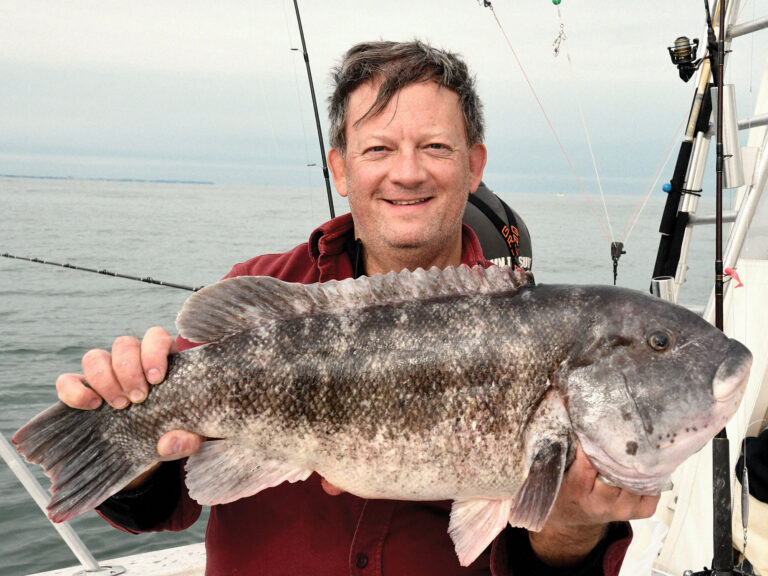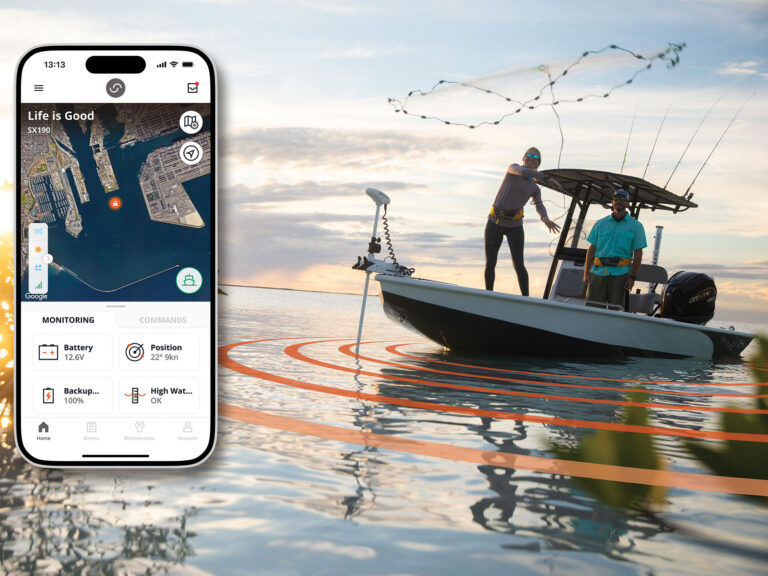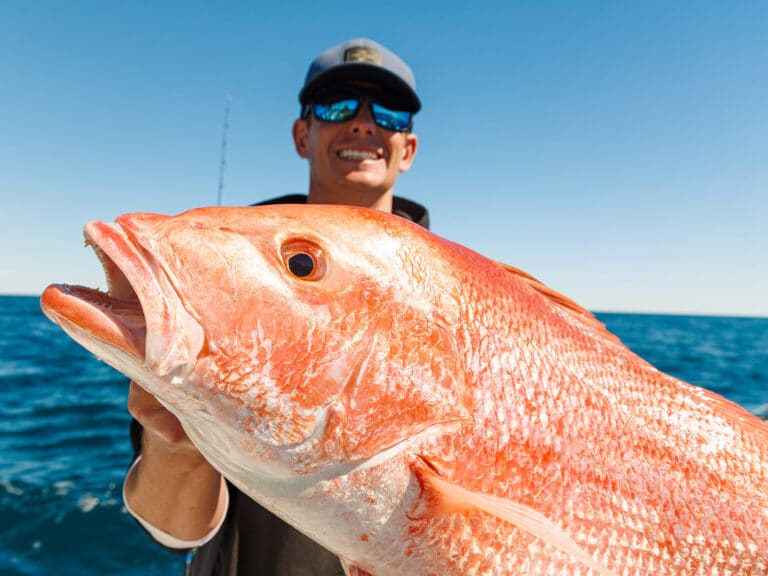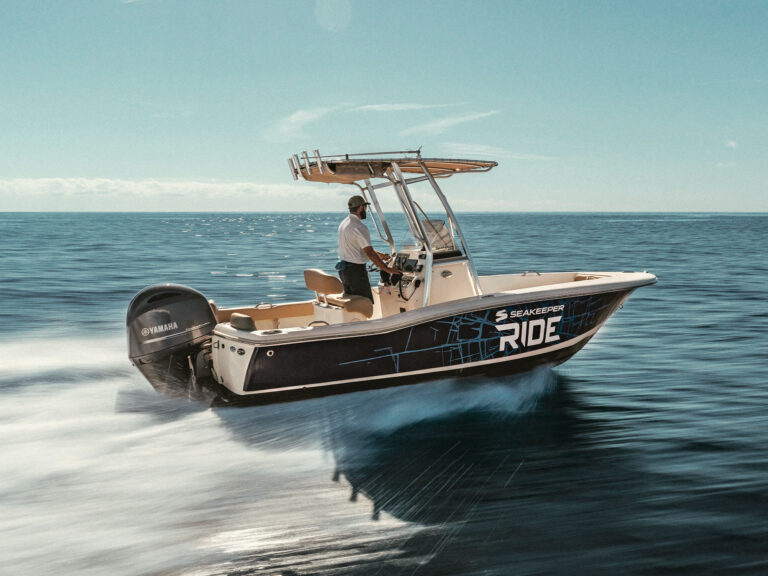
We were borderline late for a lunch meeting, so I made my last cast of the day to the edge of the shoal. Capt. Dave DeGennaro aboard Hi-Flier had already helped me put a weakfish, a striper and a fluke on the charts. Now only one target remained to complete my Barnegat Slam: a bluefish, the easiest of all, had managed to eluded me all morning. The popper hit the water, and I chugged it back over the drop-off. A crash, a dash and few cranks later and … Let’s just say we weren’t late for lunch after all. I got my grand slam, and in Barnegat Bay’s productive waters, that is a worthy and attainable goal. Here’s a proven plan to catch all four species in a single day.
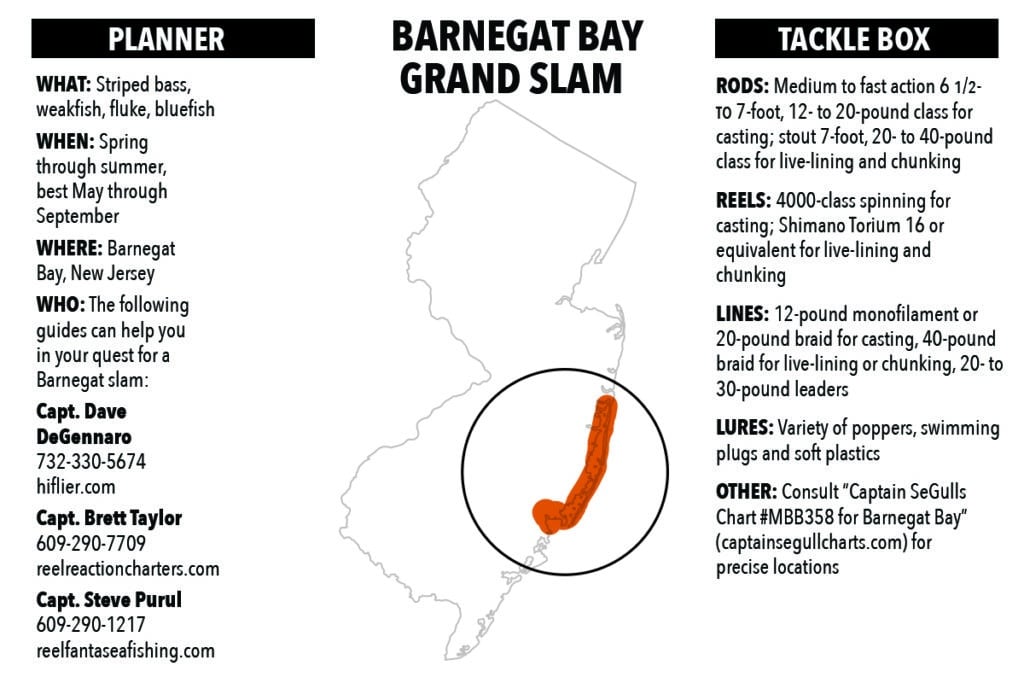
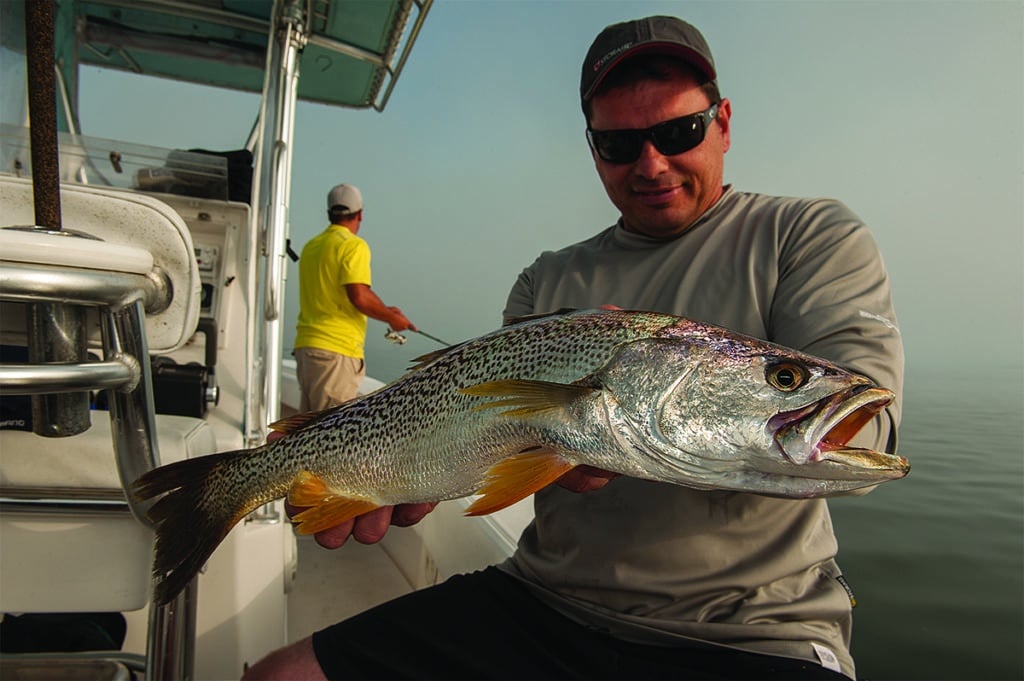
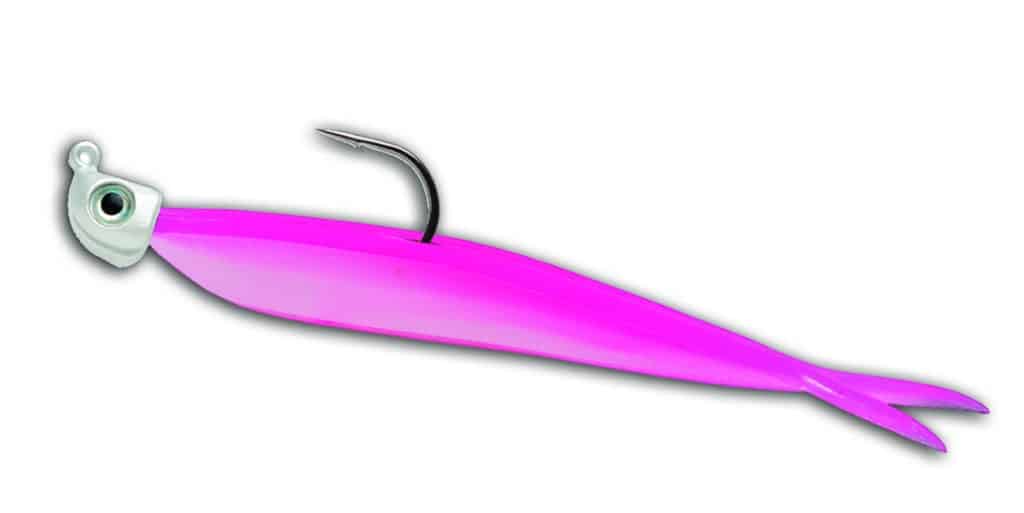
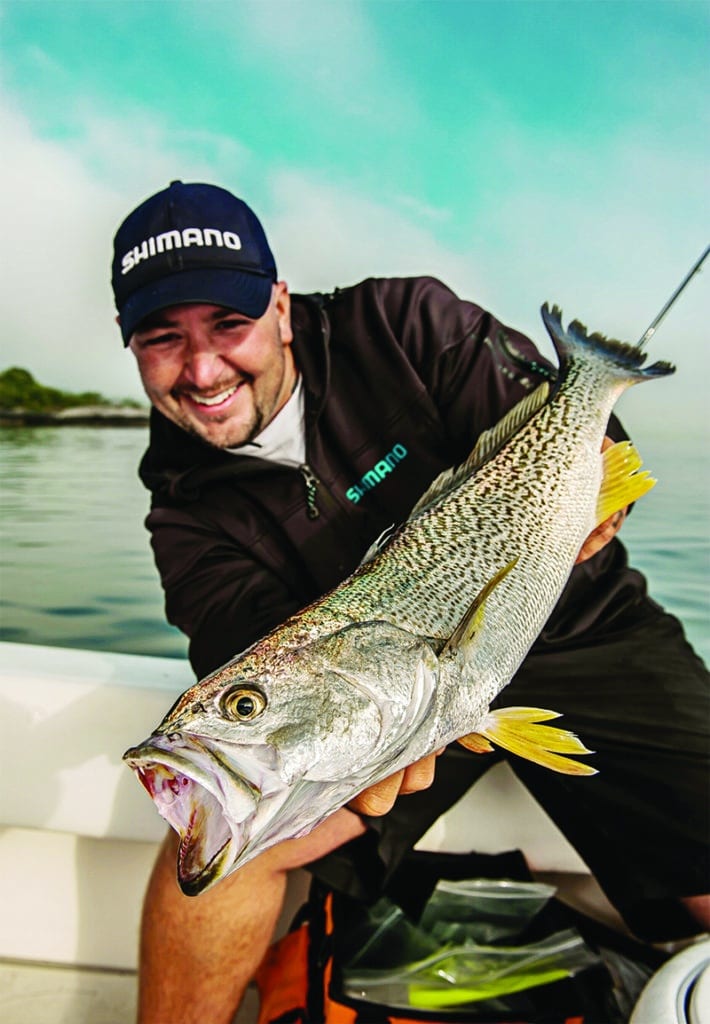
Once the sun rises high in the sky it’s time to target smaller weakies. Obtain a few quarts of fresh grass shrimp from a local tackle shop, like Bobbie’s Boat Rental in Barnegat Inlet, and start a shrimp slick at Myers Hole, where droves of smaller “spike” weakfish of 12 to 15 inches will be eager to feed. Anchor on the 6- to 15-foot ledge and dole out handfuls of shrimp to let the running tide form the buffet line. Set up with a float rig, a 24-inch piece of 15-pound fluorocarbon leader and a 1/0 bait-holder hook lancing three grass shrimp, the first hooked through the carapace, the others through the rostrum (the beak or horn). Send the float out 20 yards into the slick and leave the bail open, waiting until the line has peeled off for a good three count after the strike to set the hook.
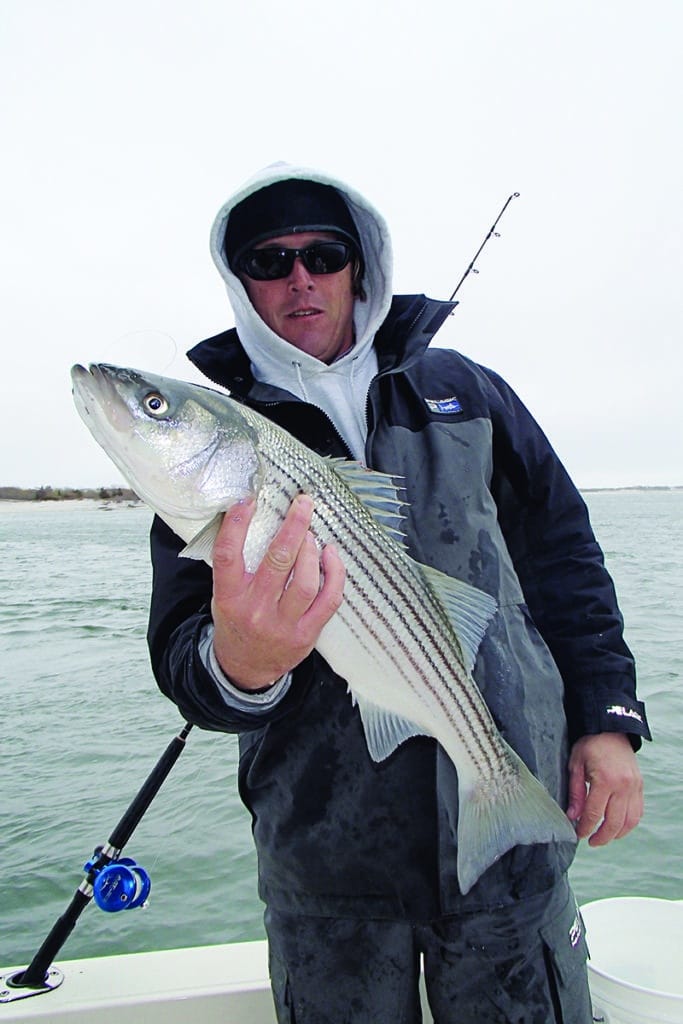
Anglers stand a great chance to hang a schoolie striper of 22 to 28 inches while targeting weakfish with rubber baits in the false-dawn hours. A sight-casting fishery has developed for stripers along the inside sod banks off the dike and Oyster Creek Channel, where it’s common to witness the dorsal fins of the bass breaking the surface. Poppers or soft plastics tossed against the sod banks at sunup become the modus operandi here. The pilings of the Route 37 bridge offer sight-casting opportunities for bass also. A well-defined clam slick brings in the linesiders like the Pied Piper. Anchor up in depths of 12 to 20 feet inside the inlet, in the Oyster Creek Channel on the north side of the dike. Hang a clam chum pot out, crack fresh clams and toss two or three out every 10 minutes to get the slick greased. Rig with a fish-finder slide with a 3- to 4-ounce bank sinker, a 50-pound barrel swivel, a 36-inch length of 30-pound fluorocarbon and an 8/0 Gamakatsu Octopus circle hook embedded in a big gob of clam. Then let your reel clicker signal when a bass has taken the hunk of surf turkey.
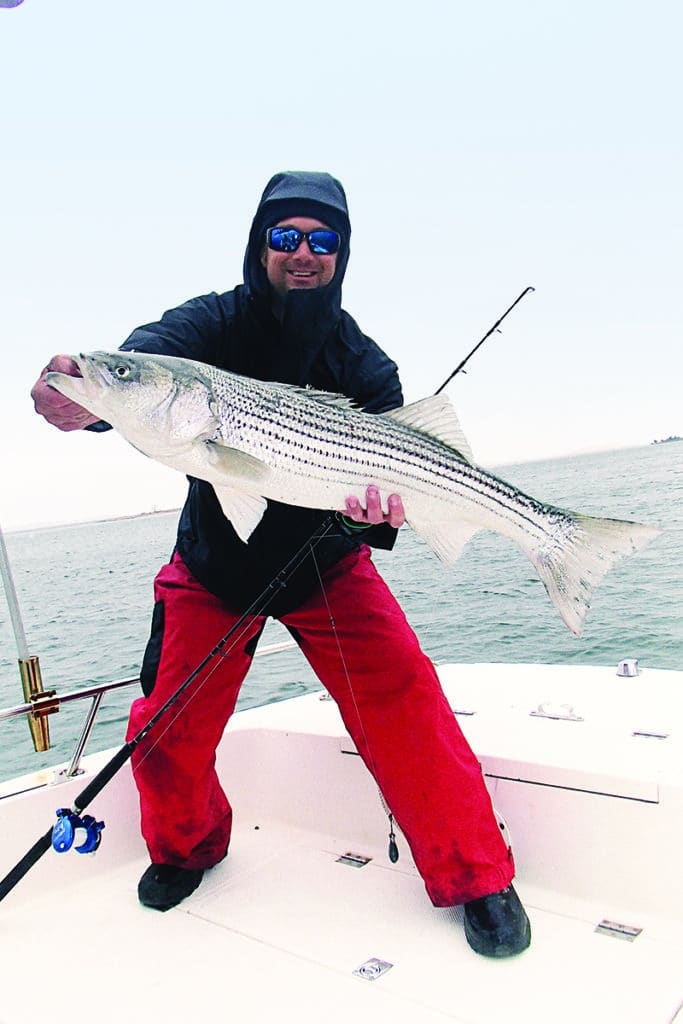
For larger stripers, work closer to Barnegat Inlet. That’s where big breeders of 15 to 35 pounds enter bay waters, especially during the spring run. The you can opt for a more aggressive approach, live-lining spot or bunkers in the shifting shoals of Barnegat Inlet, most notably on the bay side off the Coast Guard station, or the inside tip of the north jetty, especially the stretch with submerged rocks. Use the same setup employed for chunking.
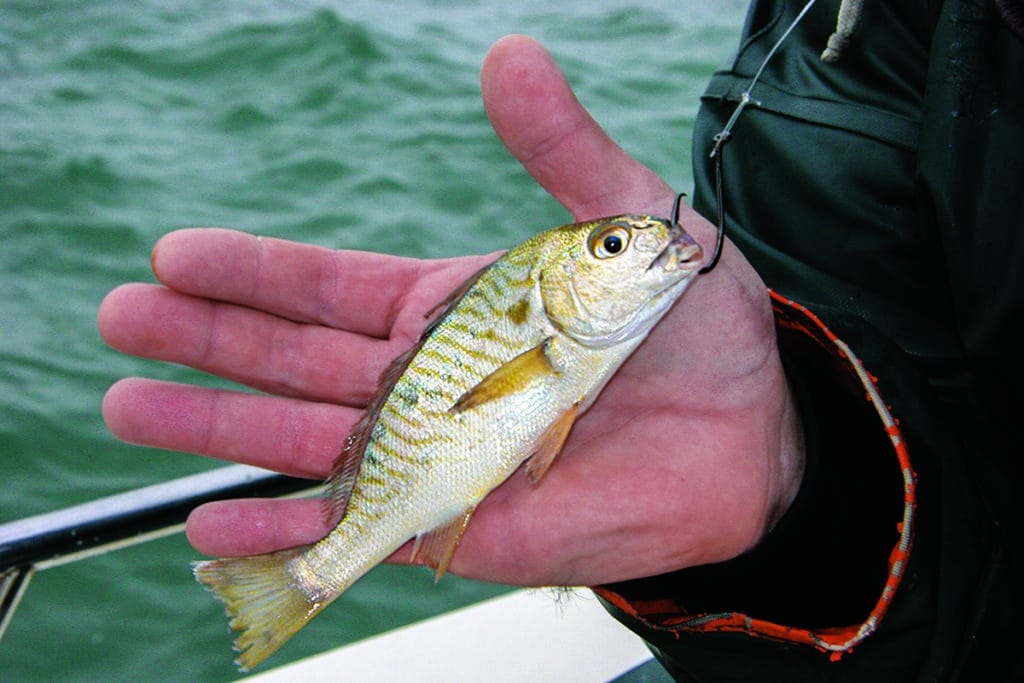
To target big striped bass, hook a live baitfish through the eyes or lips and drift it from the end of the incoming to the beginning of the outgoing tide, when the water flows slowly enough for lazy bass to chase a livie. Cast as close to the rocks as you can without getting snagged, keep tension on the line and wait for a pickup.
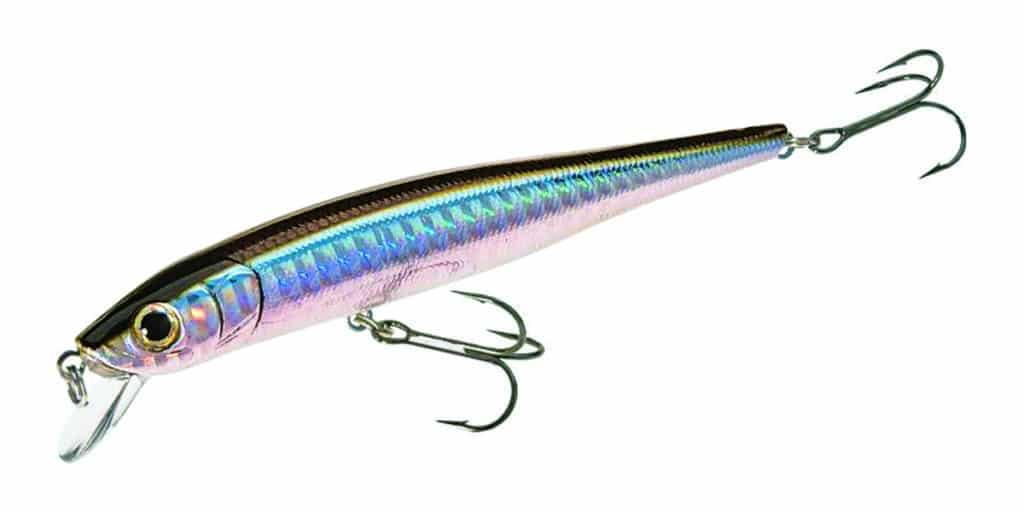
Daiwa SP Minnow does the trick on Barnegat Bay striped bass.
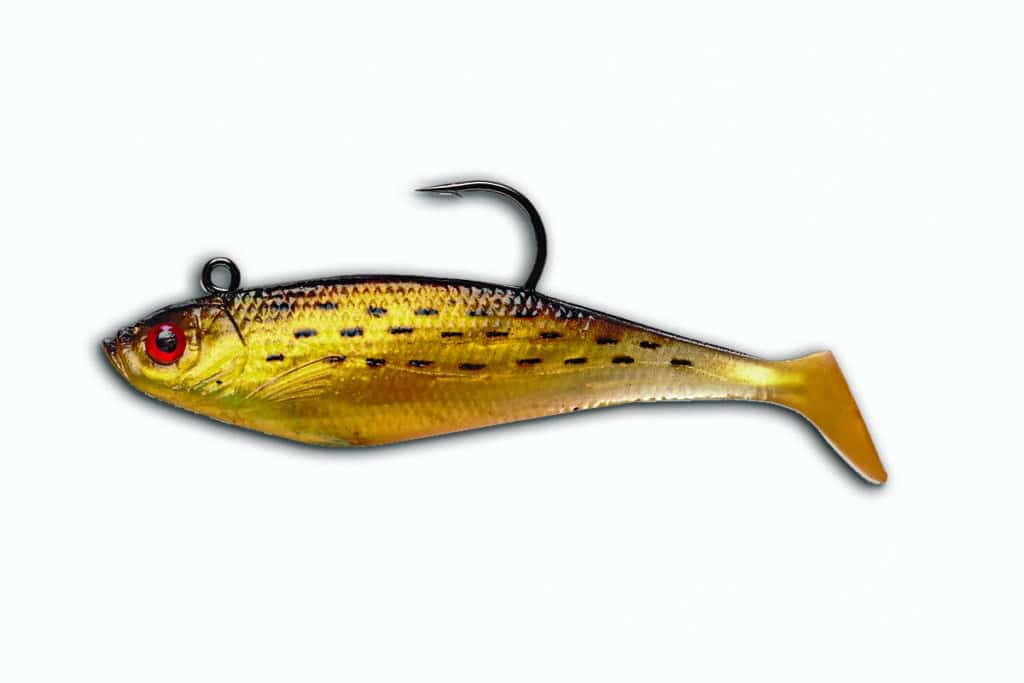
Swim baits like the Storm Wildeye Swim Shad are perfect for striped bass.
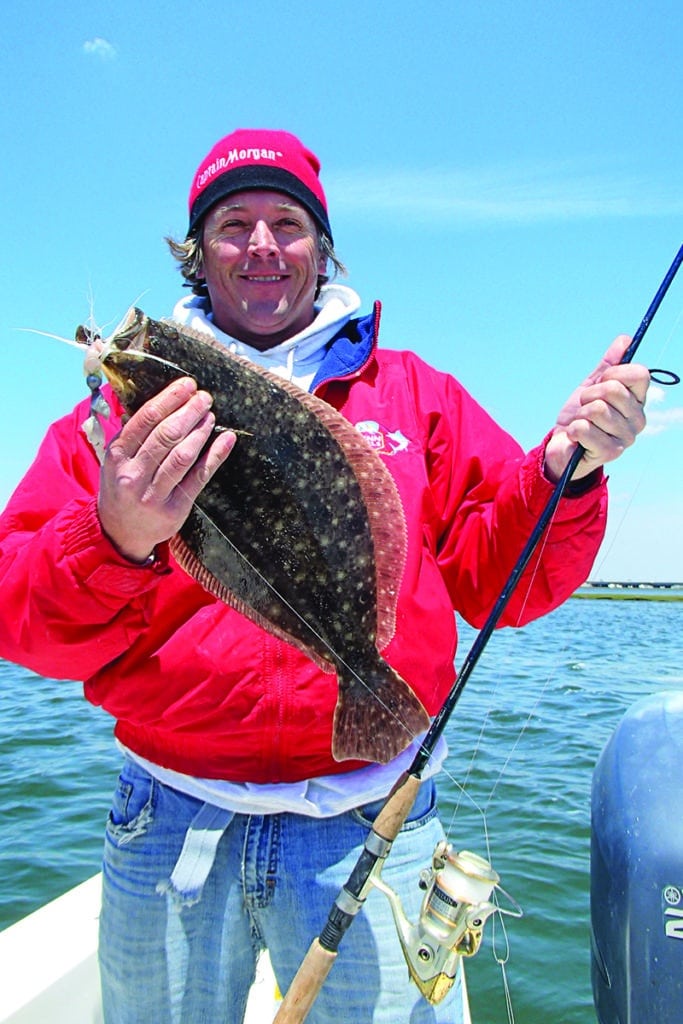
Sunshine sparks the fluke bite, and when water temps average 64 to 69 degrees in late May and early June, bucktails and strip baits are the keys to tricking flatfish. You find fluke sunning up on 4- to 7-foot-deep flats outside the Intracoastal Waterway edges during breakfast hours.
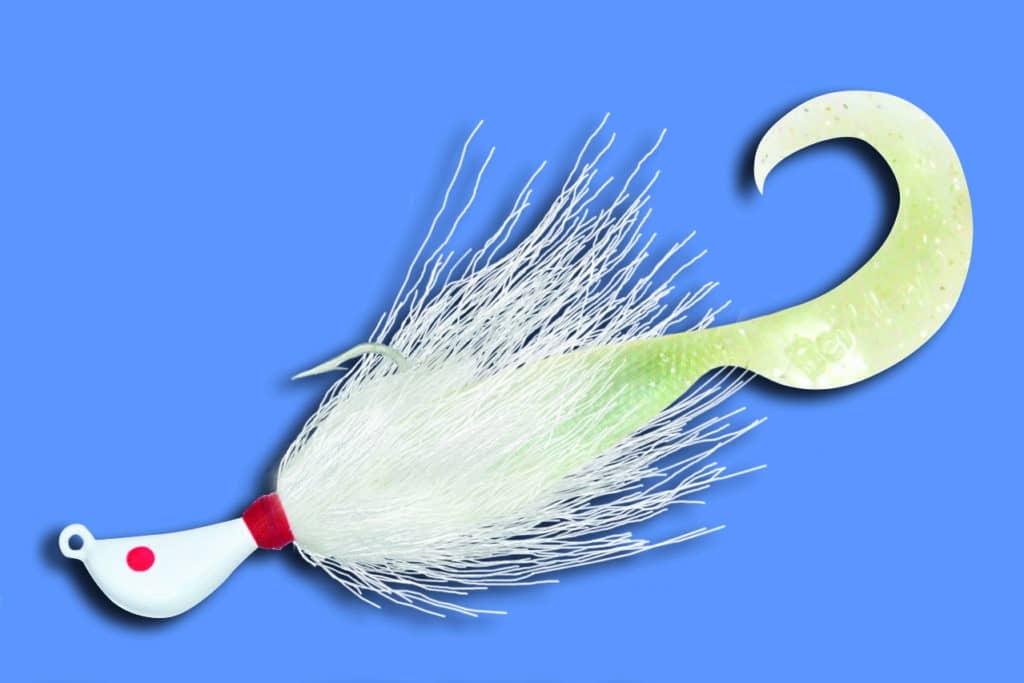
Buckatil jigs are ideal to tackle fluke in Barnegat Bay’s ICW.
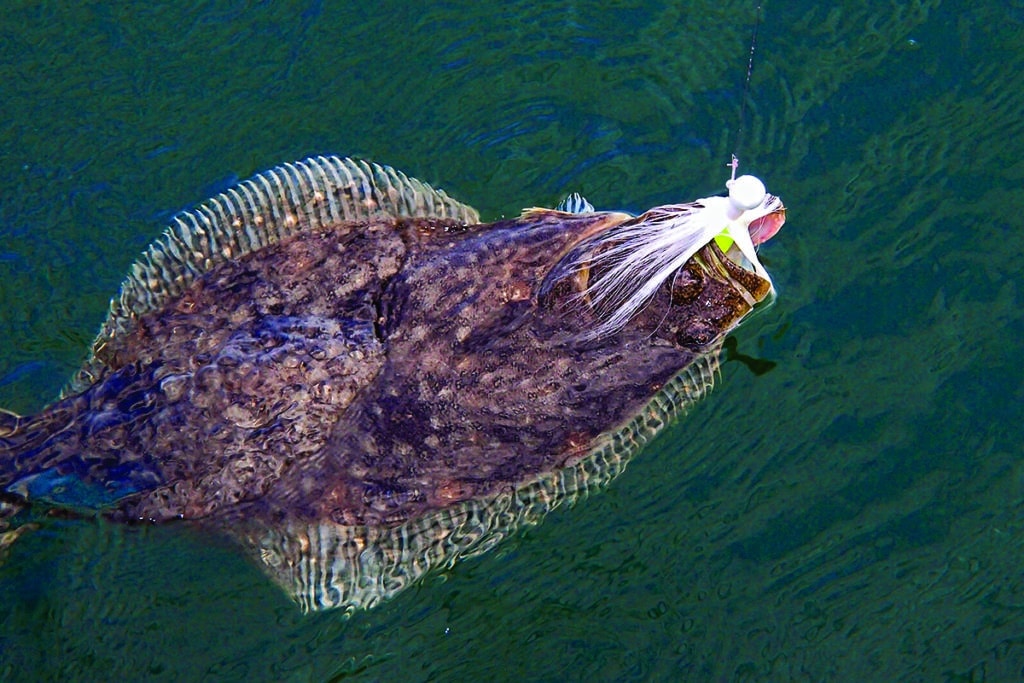
When lunchtime comes around, the fish begin to hunker down in the deeper slope of the ICW channel. Oyster Creek’s green 33 and 35 cans are red-hot spots to drift, but the entire ICW stretch from the 40 can to the inlet is tops. Try vertical jigging with ⅜- to ½-ounce white, white-and-yellow, or white-and-chartreuse round-head bucktails with a white 2/0 bucktail teaser some 18 inches above — particularly during slack tide.
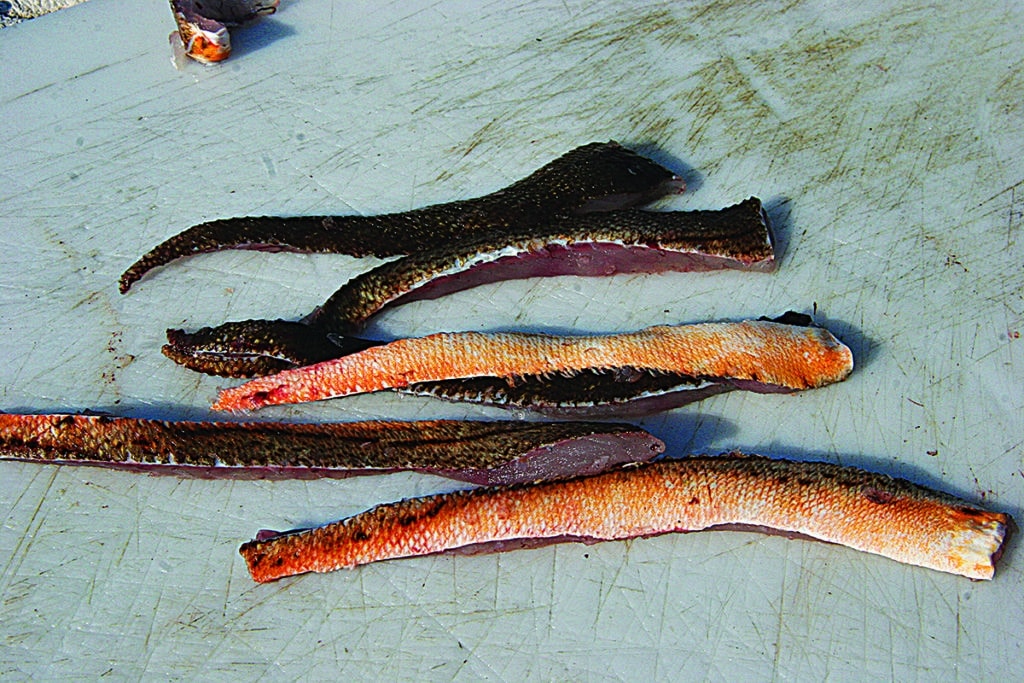
Once the tide is running fast, switch from buck tail jigs to strip baits on a fish-finder rig with a 30-inch piece of 25-pound fluorocarbon leader snelled to a 3/0 Octopus hook. Use fresh 4- to 5-inch strips of mackerel, bluefish, sea robin, spearing or squid, and drag them through the channels.
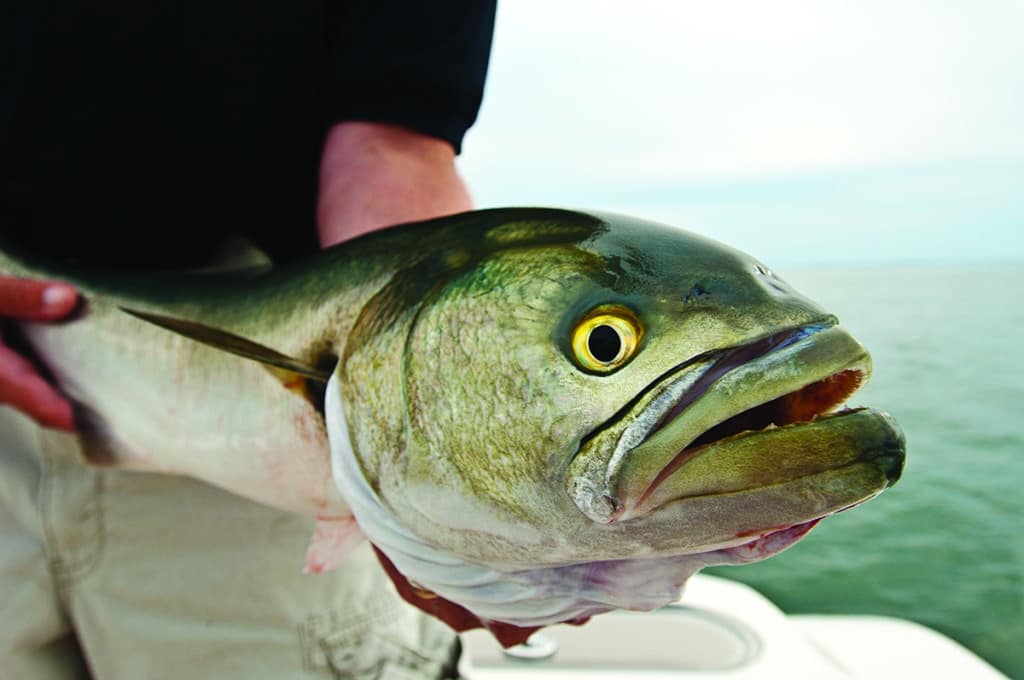
The wild card that can make it more challenging for grand-slam hopefuls to seal the deal is the bluefish. Blues are notoriously ubiquitous feeders in Barnegat Bay, but their presence — or lack thereof — can be difficult to predict. Schools randomly ravage the bay throughout the day. There is no real pattern, no specific tide or time of day. The best bet is to pay attention to the cuts and shifting sandbars inside the north side of Oyster Creek Channel during the ebbing tides and check spots like the Whalebone in Barnegat Bay proper.
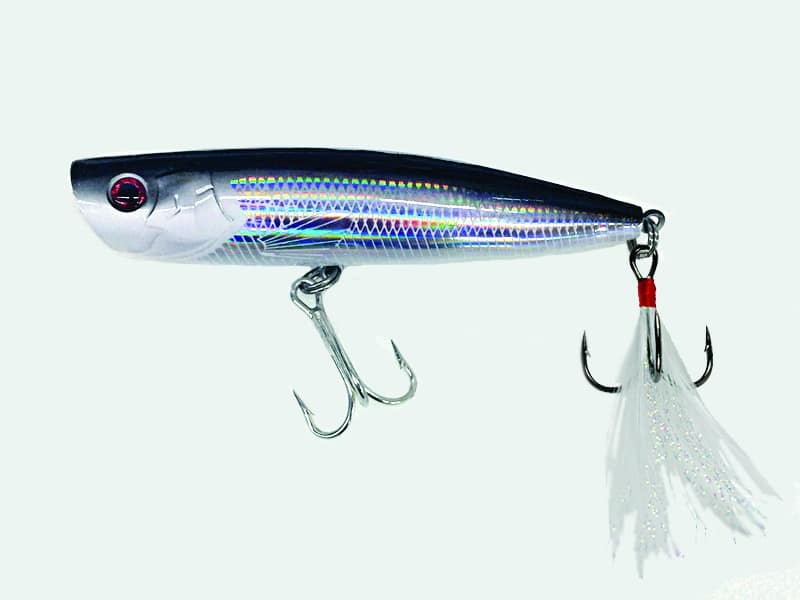
Nothing beats surface plugs when bluefish is the intended target. A 4-inch Smack-it popper is perfect for the task. A Yo-Zuri Crystal Minnow also does the trick.
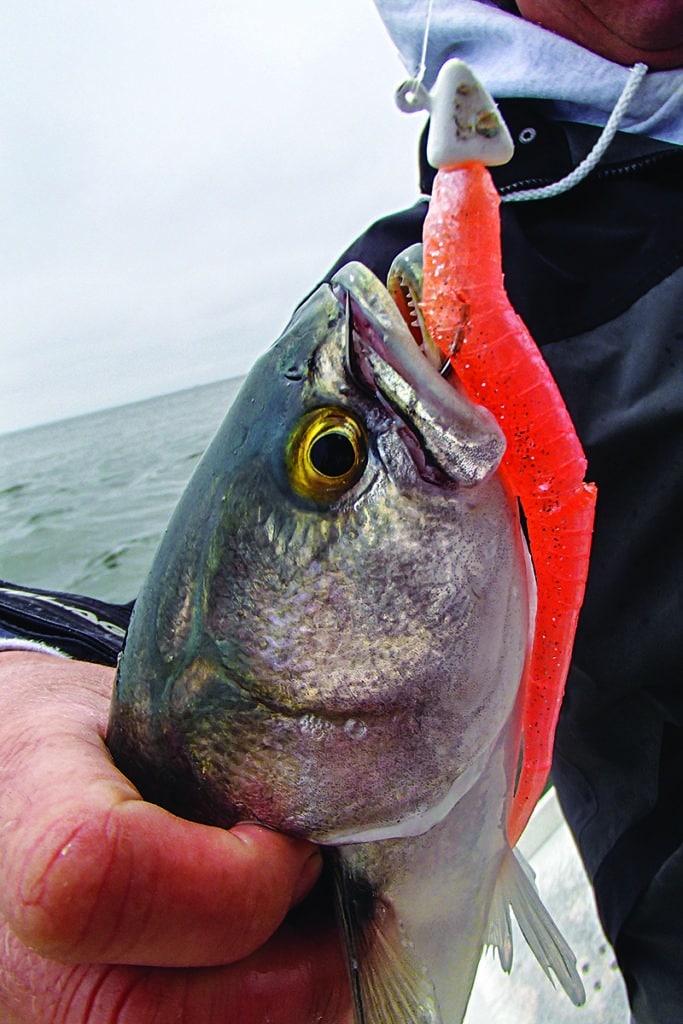
“Cocktail” blues (1- to 3-pounders) are the most likely to be terrorizing the area, but some “choppers” (3- to 5-pound blues) are often around and glad to pounce on a popper. In late spring, “racer” blues of 7 to 10 pounds occasionally infiltrate the bay as well.
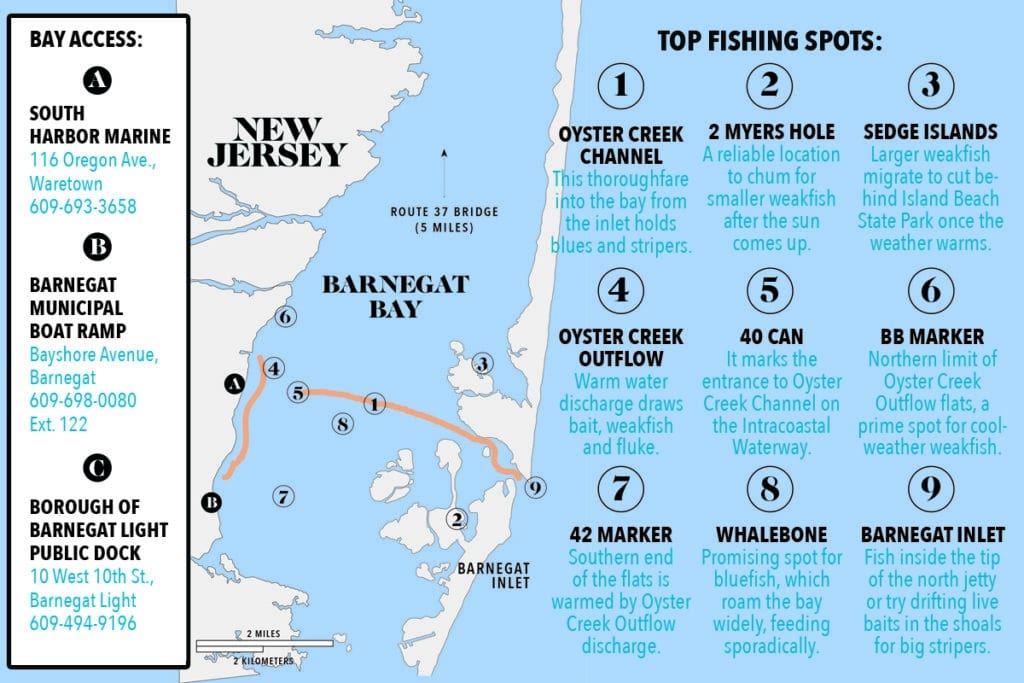
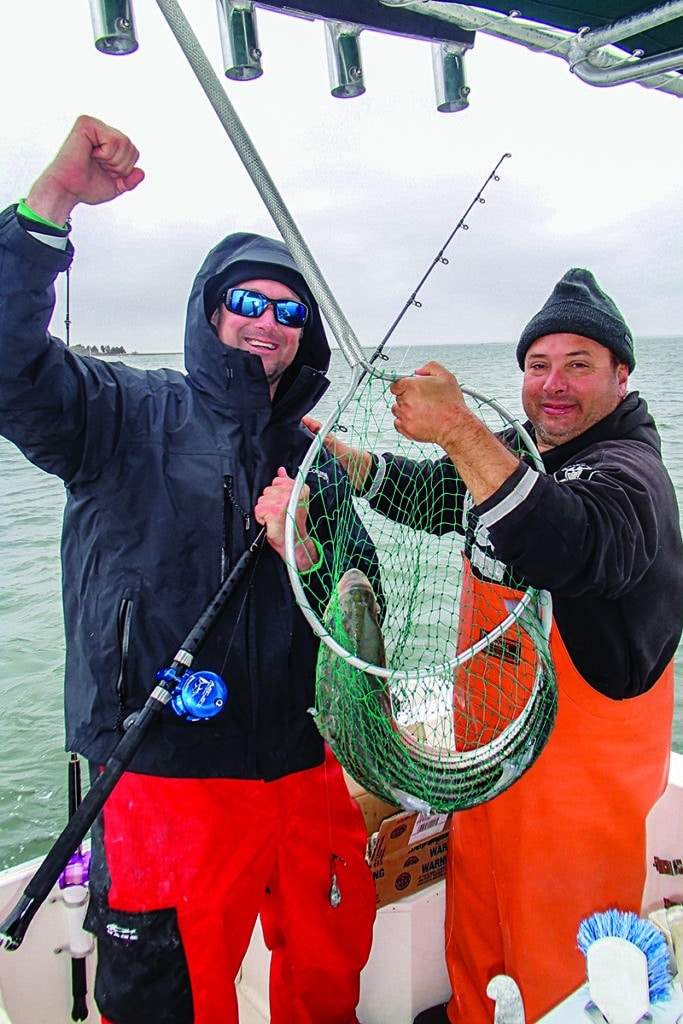
Scoring a grand slam is no easy feat, but with the right plan and the proper timing, Barnegat Bay’s bountiful waters are just the place to get it done.


